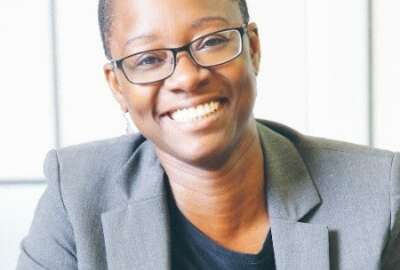
From 120 hours to 34 minutes, SBA transforms small business application processes
The U.S. Digital Service helped SBA modernize the applications to apply for government contracting programs.
Best listening experience is on Chrome, Firefox or Safari. Subscribe to Ask the CIO’s audio interviews on Apple Podcasts or PodcastOne.
The average time for a company to fill out an application to apply for the 8(a) Business Development program was 120 hours. That cost small firms tens of thousands of dollars in time and resources to gather the documents and fill them out, mostly through a manual process.
But now the Small Business Administration, with the help of the U.S. Digital Service has reduced that to an average of about 20 hours, and there are even examples where companies filled out an application in 34 minutes.
Rick Lee, the deputy team lead for the SBA project for USDS, said each of the programs were in various states of modernization, but most actions required paper processes.

“In a lot of cases it was extreme. For instance, a firm applying to the 8(a) program might have to submit up to 2,500 pages of documentation and application just to be admitted to the program,” Lee said on Ask the CIO. “Our effort was to digitize these processes. So far, Certify.SBA.gov has rolled out in production applications and case management for the women-owned small business program, the all-small mentor-protégé program and the 8(a) program.”
USDS’s work with the SBA is one of several projects USDS highlighted in its annual report to Congress.
SBA had tried before to modernize these applications, but struggled to integrate the assorted systems to manage the application process.
Alberto Colon-Viera, a USDS digital service engineer and product owner for the HUBZone application, said USDS followed its usual path to work on projects—starting with a discovery sprint, procurement assistance to help SBA move to agile methodology for acquisition, and then begin working on the transformation itself.
He said SBA’s previous efforts that failed took the waterfall approach to application development.
“This is really a sea change from a culture level,” Lee said. “The first contract we worked on had to be specially structured to allow for agile development. That agile development now has trickled down into SBA’s own project management group that is running projects in an agile environment. This application is all cloud-based and SBA was one of the first agencies using Amazon Web Services. That was another culture shift we were able to help them with.”
Lee said one of the primary goals of this modernization effort is to reduce the burden on small firms applying for these programs. SBA followed a similar style of forms that many other agencies, such as the IRS, use to collect information.
“We went through and did an audit of all the questions all of the programs are asking. We leveled them across the programs so firms don’t have to submit multiple, duplicative data points to apply for programs,” he said. “We also reworked them from a plain language perspective and took the questions out of governmentese and turned them into plain language.”
Colon-Viera added the USDS team developed application programming interfaces (APIs) and micro-services to create the process once and use it across many systems.
As part of the burden reduction for the companies, SBA’s project team integrated with the System for Award Management portal (SAM.gov). Lee said that integration reduced the amount of information needed to fill out an 8(a) or women-owned business application by a minimum of 10 percent.
“In terms of the quantity of information we are able to reduce, I’d say we are looking at 50 percent common, but it really varies from program to program,” he said. “The 8(a) program, for instance, is really a business development program, not a contracting program, so it requires a lot more information to be gathered and evaluated whereas the women-owned small business program is a self-certification and the entire questionnaire is like 20 questions. We’ve identified areas where if you’ve completed the women-owned small business program questionnaire, you are more than half way on the 8(a) application. If you are an 8(a) participant, the first question on the women-owned small business questionnaire is ‘Are you an 8(a) qualified firm?’ If so, upload your 8(a) certificate and you are down.”
Another key to this effort was USDS reviewed the business logic of the application systems. Too often, agencies struggled with changing the business logic and instead sought to change the technology.
Lee said USDS simplified the business logic and limited the amount that is built into the workflows.
“We are trying really hard to deliver value, very quickly and very iteratively,” he said. “This was one way for us to get there fast, by omitting the business logic that normally goes into a very robust case management system so we can get this deployed very quickly.”
Colon-Viera added USDS has learned a lot with each new application to make the next one better and more user friendly.
“At the end of the project, we want to be able to de-commission all of the systems that are no longer required,” Colon-Viera said.
Copyright © 2024 Federal News Network. All rights reserved. This website is not intended for users located within the European Economic Area.
Jason Miller is executive editor of Federal News Network and directs news coverage on the people, policy and programs of the federal government.
Follow @jmillerWFED
Related Stories







